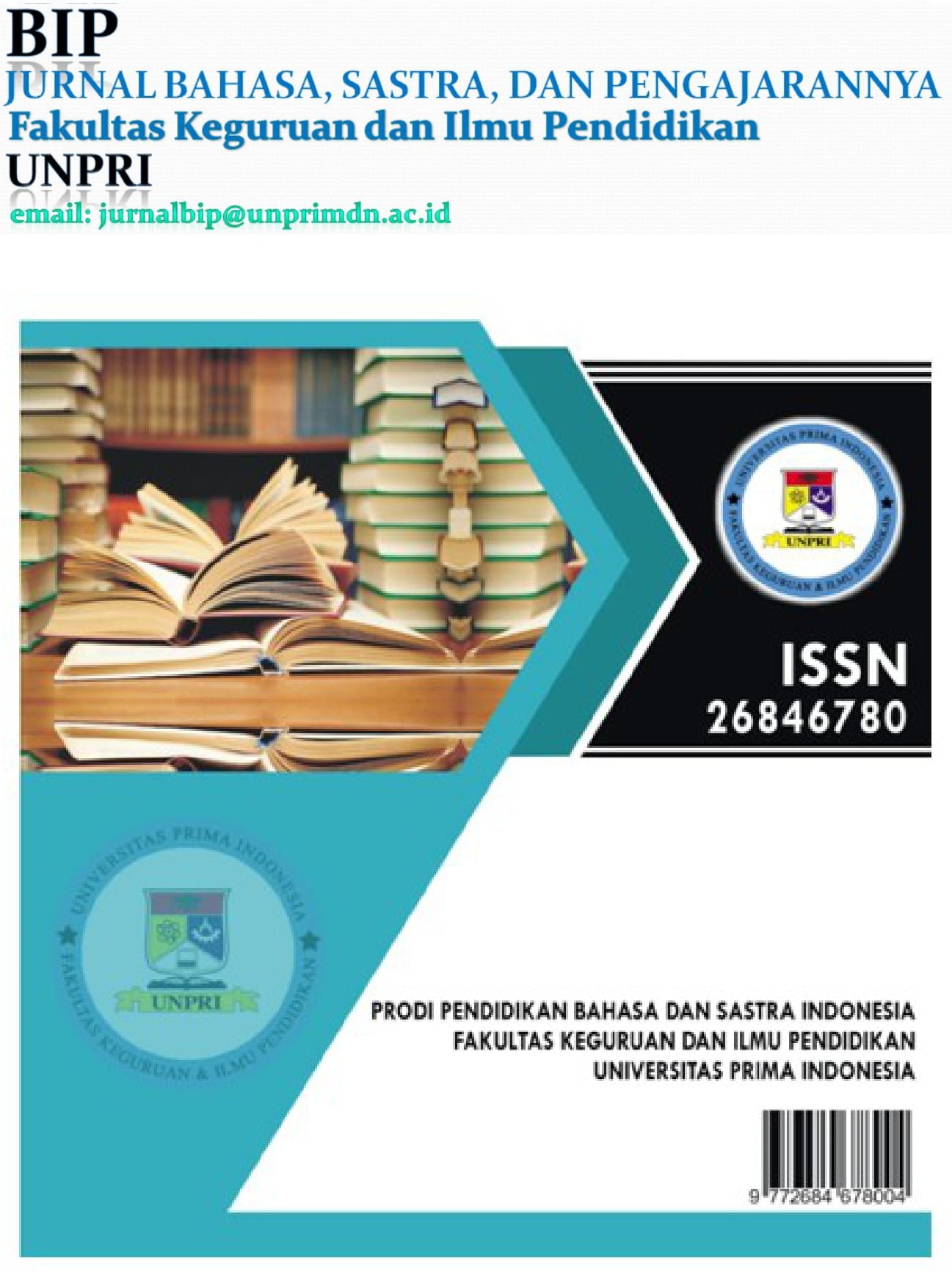EXAMINING THE MEANING OF GEN ALPHA SLANG: A PRAGMATIC REVIEW OF SOCIAL MEDIA DISCOURSE
##plugins.themes.academic_pro.article.main##
Abstract
The use of Gen Alpha slang on social media is feared to have an impact on formal contexts. As a result, previous generations may not understand the meaning of these slang expressions. As a consequence, the use of good and correct Indonesian language in formal contexts may be neglected. This research aims to analyze the meaning and purpose behind the use of Gen Alpha slang words on social media, and to increase the understanding of the meaning of Gen Alpha slang in social media interaction and communication. The research data was collected from social media platforms such as Instagram, X, and TikTok. The method used is content analysis with a qualitative approach. The research object is Gen Alpha slang words, while the subject is social media users who use these slang words in comments or posts. Of the 15 purposes of using slang that has been identified, 6 dominant purposes were found in this research, with sarcasm being the most common purpose. The use of slang out of context can be a source of miscommunication and misperception among users.
##plugins.themes.academic_pro.article.details##

This work is licensed under a Creative Commons Attribution-ShareAlike 4.0 International License.
References
- Abdulhakim, N. (2024, July 26). Apa Arti Fanum Tax, Istilah Viral di TikTok? Kata Ini Kerap Dipakai Gen Z di Berbagai Medsos. TribunTrends.com. Dikutip dari https://trends.tribunnews.com
- Anggini, N., Afifah, Y. N., & Syaputra, E. (2022). Pengaruh Bahasa Gaul (Slang) terhadap Bahasa Indonesia pada Generasi Muda. Jurnal Multidisiplin Dehasen, 1(3), 143–148.
- Azizah, F., Nugraha, B, D., Wahyuni, C, P, D., Effendy, S, A., Wirata, T, I, N., & Rahadian, S. (2021) Fenomena Penggunaan Bahasa Slang dan Nilai-Nilai Karakter Pada Mahasiswa. Jurnal Digital Media & Relationship, 3(2), 62-69.
- Bintarawati, N., Wicaksana, M. F., & Muryati, S. (2023). Eksistensi Bahasa Indonesia dalam Bahasa Gaul di Universitas Veteran Bangun Nusantara. Indonesia: Jurnal Pembelajaran Bahasa dan Sastra Indonesia, 4(2), 250-257.
- Budiasa, I. G., Savitri, P. W., & Dewi, A. A. Sg. S. S. (2021). Penggunaan Bahasa Slang di Media Sosial. HUMANIS: Journal of Arts and Humanities, 25(2), 192–200.
- Cindana & Sutarini. (2022). Analisis Penggunaan Kosakata Bahasa Indonesia di Kalangan Generasi Alpha. Journal Ability: Journal of Education and Social Analysis, 3(3), 43-54.
- Fitri, A. N. (2023). Penggunaan Bahasa Slang pada Komunitas Sosial Media Litmatch Kajian Sosiolinguistik. Jurnal Ilmiah SARASVATI, 5(2), 142–152.
- Hariadi (2024, September 8). Dari Mana Asal Muasal Bahasa Slang Gen Alpha seperti Skibidi, Gyat hingga Fanum Tax, Apa Artinya?. nomorsatukaltim.disway.id. Dikutip pada tanggal dari https://nomorsatukaltim.disway.id
- Okma, P. (2023). Pengaruh Bahasa Gaul Terhadap Eksistensi Bahasa Indonesia Dikalangan Mahasiswa. Jurnal Ilmu Sosial, Humaniora, dan Seni (JISHS), 1(4), 724–729.
- Purba, N. A., & Sidebang, R. (2023). Konsep Dasar Bahasa dan Sastra Indonesia. Majalengka: EDUPEDIA Publisher. Dikutip dari https://press.eduped.org/index.php/pedia/article/view/47/23
- Rahmia, N. H. (2024, Juli 1). Apa Itu Skibidi? Bahasa Gaul Gen Alpha di TikTok, Ini Asal-usulnya. Sonora.id. Dikutip pada tanggal dari https://www.sonora.id/read/424113335/apa-itu-skibidi-bahasa-gaul-gen-alpha-di-tiktok-ini-asal-usulnya
- Sulaeman, A. (2019). Bahasa Slang Generasi Muda dalam Media Sosial di Era Milenial. eJournal Universitas Bengkulu, 45-46.
- Susilawati, L., & Salsabila, S. A. (2024). Analisis Penggunaan Bahasa Indonesia Dalam Komunikasi di Kalangan Generasi Z. JUPENSAL: Jurnal Pendidikan Universal, 1(3), 499–505.
- Tasyarasita, A. Z., Duhita, M. E., Yulianti, W., & Yustanto, H. (2023). Ragam Bahasa Slang Oleh Remaja Gen Z pada Media Sosial TikTok (Kajian Sosiolinguistik). Translation and Linguistics (Transling), 3(2), 98-109.
- Zahra, A., Ahmadi, W., & Salsabila. (2024). RAGAM BAHASA GAUL GENERASI Z DI MEDIA SOSIAL TWITTER. Jurnal Cahaya Mandalika ISSN 2721-4796 (online), 5(1), 132-139.

